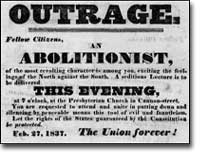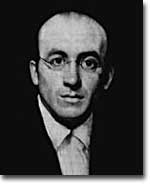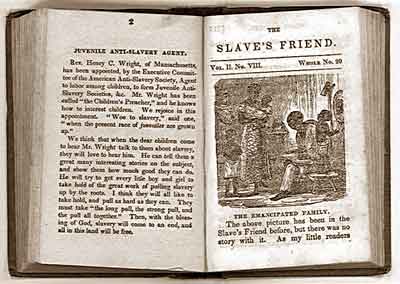 Cotton is terribly important, not only to the South, but to the nation. In fact, by 1815, cotton is the most valuable export of the United States. By 1840, cotton is more valuable than everything else the United States exports put together, so the value of slaves is tremendous. By the time of the Civil War, by 1860, the dollar value of slave property is greater than the dollar value of all of America's railroads, all of America's banks, all of America's manufacturing put together. Slavery is no sideshow in American society. It is very much the main event, and the cotton crop that slaves produced makes America important to the world.
Cotton is terribly important, not only to the South, but to the nation. In fact, by 1815, cotton is the most valuable export of the United States. By 1840, cotton is more valuable than everything else the United States exports put together, so the value of slaves is tremendous. By the time of the Civil War, by 1860, the dollar value of slave property is greater than the dollar value of all of America's railroads, all of America's banks, all of America's manufacturing put together. Slavery is no sideshow in American society. It is very much the main event, and the cotton crop that slaves produced makes America important to the world.
Do you realize that the American South by 1860 produces seven eighths of the world's cotton. Now, that's equivalent of OPEC today and oil. The fact is that when the Confederacy considers going independent, seceding from the United States, one of the things that encourages those people in the South to believe that a separate independent Confederacy is possible, is the fact that it controls so much of the world's cotton, and cotton is important, not only to the cotton textile industries of New England, but also to the textile industries of England, of France, of Germany, so that cotton has very important economic and consequently, political power.
The Film: Interview Transcripts: James Oliver Horton
James Oliver Horton, Ph.D., historian on
the economic impact of slavery
 Cotton is terribly important, not only to the South, but to the nation. In fact, by 1815, cotton is the most valuable export of the United States. By 1840, cotton is more valuable than everything else the United States exports put together, so the value of slaves is tremendous. By the time of the Civil War, by 1860, the dollar value of slave property is greater than the dollar value of all of America's railroads, all of America's banks, all of America's manufacturing put together. Slavery is no sideshow in American society. It is very much the main event, and the cotton crop that slaves produced makes America important to the world.
Cotton is terribly important, not only to the South, but to the nation. In fact, by 1815, cotton is the most valuable export of the United States. By 1840, cotton is more valuable than everything else the United States exports put together, so the value of slaves is tremendous. By the time of the Civil War, by 1860, the dollar value of slave property is greater than the dollar value of all of America's railroads, all of America's banks, all of America's manufacturing put together. Slavery is no sideshow in American society. It is very much the main event, and the cotton crop that slaves produced makes America important to the world.the economic impact of slavery
Slavery in the United States
http://eh.net/encyclopedia/article/wahl.slavery.us
What is the comparable "value" of a slave in today's prices?
None of these prices has much meaning to us today, but they would if we revalue them in today's dollars to the amount of money slave owners spent 150 years ago. The techniques developed in MeasuringWorth have created ten "measures" to use to compare a monetary value in one period to one in another as explained in the essay "Measures of Worth."9 Of those ten, three are useful for discussing the value of a slave. They are: labor or income value, economic status and real price10. Using these measures, the value in 2009 of $500 in 1850 (the average price of a slave that year) ranges from $11,000 to $162,000 thousand.
As discussed above, the $500 price in 1850 represents the expected net value of the future labor services a slave would provide. This is why the labor or income value is the correct measure of the value of a slave's services in today's prices. That $500 would be $78,000 in today's prices.
While some slaves were rented out for farm and other types of work, most slaves worked on the farms and plantations of their owners. In both cases, the work they did was mostly unskilled, so a comparable measure of these services would be the unskilled wage11. In other words, we can assume that to hire someone to do the work of a slave would cost the unskilled wage of that day. Thus, a measure of the average value of a slave would be the present value of the net rental cost over the life expectancy of the average slave.
Thus the value in today's dollars of a slave during the antebellum period ranges from $45,000 (in 1809) to $134,000 of a slave's expected revenue less maintenance costs. If we assume, for example, that the average slave will live 20 more years, then today's price for a slave valued at $500 in 1850 could be interpreted as the $78,000 in wages plus the 20 years of room, board, and clothing that it would take to hire unskilled workers today to perform the lifetime services expected of a slave12. Unlike hired hands, slaves were responsible in large part for producing their own room, board, and clothing. Given the work week today is significantly shorter than in 1850 and that slaves were made to work harder during the same amount of time as free workers, it would take more than one hired hand today to replace the labor supplied by a slave then.
Even at these prices, some slaves, particularly those with artisan skills, might ultimately earn enough to buy themselves out of slavery. It was not uncommon, especially in the Old South, for masters to allow others to hire the services of his or her slaves. This was particularly true of slaves who lived in urban areas, independent of the master. They were expected to make their own arrangements. "The master fixed the wage that the slave must bring in. All above this amount the slave might keep himself. … employers frequently hired the slave's time from the owner at a certain amount and paid the slave an additional wage contingent on amount of work accomplished."13
Real Price
Economists commonly use the real price measure when they are trying to account for the impact of inflation. The real price today is computed by multiplying the value in the past by the increase in the consumer price index (CPI). The result compares that past value to a ratio of the cost of a fixed bundle of goods and services the average consumer buys in each of the two years. In the construction of the CPI bundle, an effort is made to compensate for quality changes in the mix of the bundle over time.15 Still, the longer the time span, the less consistent the comparison. In the 19th century, there were no national surveys to figure out what the average consumer bought. The earliest budget study used by economic historians was of 397 workmen's families in Massachusetts and was constructed in 1875. These families spent over half their income on food and rented their housing.16
The MeasuringWorth calculator shows that the "real price" of $500 in 1850 would be approximately $12,000 in 2009 prices. We all can identify with what that amount of money would buy today, but hardly anything we would spend $12,000 on today was available 160 years ago. $500 in 1850 would have purchased 6,000 pounds of bacon, 3,800 pounds of coffee, 2,000 pounds of butter, or 1,200 gallons of gin. It is unlikely, however, that this was the budget of the typical slave owner. Most of the food would be produced on the plantation, and housing would have been buildings constructed by the owner (and his slaves). The "opportunity cost" of the $500 for the slave owner would have been supplies for the plantation or perhaps luxuries and travel.
Using the real price is not the correct index to use for measuring the value of a slave's labor services in today's prices. It does, however, give an idea of what the cost of purchasing a slave was in 2009 dollars. Thus, just before the start of the Civil War, the average price of a slave in the United States was $20,000 in current dollars. There is ample evidence that there are several million of people enslaved today even though slavery is not legal anywhere in the world. There are several organizations such as Anti-Slavery International that will point out that in many places today, slaves sell for as little as (or even less than) $100!

Every movement needs a voice.
For the entire generation of people that grew up in the years that led to the Civil War, William Lloyd Garrison was the voice of Abolitionism. Originally a supporter of colonization, Garrison changed his position and became the leader of the emerging anti-slavery movement. His publication, The Liberator, reached thousands of individuals worldwide. His ceaseless, uncompromising position on the moral outrage that was slavery made him loved and hated by many Americans.

Although The Liberator was Garrison's most prominent abolitionist activity, he had been involved in the fight to end slavery for years prior to its publication.
In 1831, Garrison published the first edition of The Liberator. His words, "I am in earnest — I will not equivocate — I will not excuse — I will not retreat a single inch — AND I WILL BE HEARD," clarified the position of the new Abolitionists. Garrison was not interested in compromise. He founded the New England Anti-Slavery Society the following year. In 1833, he met with delegates from around the nation to form the American Anti-Slavery Society. Garrison saw his cause as worldwide. With the aid of his supporters, he traveled overseas to garner support from Europeans. He was, indeed, a global crusader. But Garrison needed a lot of help. The Liberator would not have been successful had it not been for the free blacks who subscribed. Approximately seventy-five percent of the readers were free African-Americans.

The Liberator wasn't the only abolitionist manifesto during the 1800s. Pamphlets like this one were disseminated widely throughout the North, although many were banned in the South.
Garrison saw moral persuasion as the only means to end slavery. To him the task was simple: show people how immoral slavery was and they would join in the campaign to end it. He disdained politics, for he saw the political world as an arena of compromise. A group split from Garrison in the 1840s to run candidates for president on the Liberty Party ticket. Garrison was not dismayed. Once in Boston, he was dragged through the streets and nearly killed. A bounty of $4000 was placed on his head. In 1854, he publicly burned a copy of the Constitution because it permitted slavery. He called for the north to secede from the Union to sever the ties with the slaveholding south.
William Lloyd Garrison lived long enough to see the Union come apart under the weight of slavery. He survived to see Abraham Lincoln issue the Emancipation Proclamation during the Civil War. Thirty-four years after first publishing The Liberator, Garrison saw the Thirteenth Amendment to the Constitution go into effect, banning slavery forever. It took a lifetime of work. But in the end, the morality of his position held sway.
http://www.ushistory.org/us/28a.asp
No comments:
Post a Comment